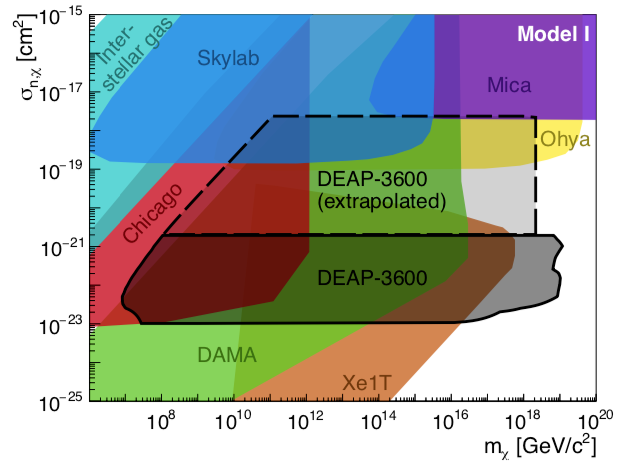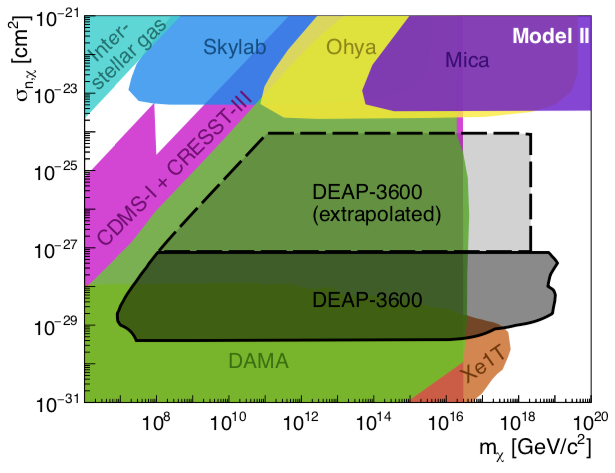This is part one of our coverage of the CDF W mass result covering its implications. Read about the details of the measurement in a sister post here!
Last week the physics world was abuzz with the latest results from an experiment that stopped running a decade ago. Some were heralding this as the beginning of a breakthrough in fundamental physics, headlines read “Shock result in particle experiment could spark physics revolution” (BBC). So what exactly is all the fuss about?
The result itself is an ultra-precise measurement of the mass of the W boson. The W boson is one of the carriers of weak force and this measurement pegged its mass at 80,433 MeV with an uncertainty of 9 MeV. The excitement is coming because this value disagrees with the prediction from our current best theory of particle physics, the Standard Model. In theoretical structure of the Standard Model the masses of the gauge bosons are all interrelated. In the Standard Model the mass of the W boson can be computed based on the mass of the Z as well as few other parameters in the theory (like the weak mixing angle). In a first approximation (ie to the lowest order in perturbation theory), the mass of the W boson is equal to the mass of the Z boson times the cosine of the weak mixing angle. Based on other measurements that have been performed including the Z mass, the Higgs mass, the lifetime of muons and others, the Standard Model predicts that the mass of the W boson should be 80,357 (with an uncertainty of 6 MeV). So the two numbers disagree quite strongly, at the level of 7 standard deviations.
If the measurement and the Standard Model prediction are both correct, this would imply that there is some deficiency in the Standard Model; some new particle interacting with the W boson whose effects haven’t been unaccounted for. This would be welcome news to particle physicists, as we know that the Standard Model is an incomplete theory but have been lacking direct experimental confirmation of its deficiencies. The size of the discrepancy would also mean that whatever new particle was causing the deviation may also be directly detectable within our current or near future colliders.
If this discrepancy is real, exactly what new particles would this entail? Judging based on the 30+ (and counting) papers released on the subject in the last week, there are a good number of possibilities. Some examples include extra Higgs bosons, extra Z-like bosons, and vector-like fermions. It would take additional measurements and direct searches to pick out exactly what the culprit was. But it would hopefully give experimenters definite targets of particles to look for, which would go a long way in advancing the field.
But before everyone starts proclaiming the Standard Model dead and popping champagne bottles, its important to take stock of this new CDF measurement in the larger context. Measurements of the W mass are hard, that’s why it has taken the CDF collaboration over 10 years to publish this result since they stopped taking data. And although this measurement is the most precise one to date, several other W mass measurements have been performed by other experiments.
The Other Measurements

Previous measurements of the W mass have come from experiments at the Large Electron-Positron collider (LEP), another experiment at the Tevatron (D0) and experiments at the LHC (ATLAS and LHCb). Though none of these were as precise as this new CDF result, they had been painting a consistent picture of a value in agreement with the Standard Model prediction. If you take the average of these other measurements, their value differs from the CDF measurement the level about 4 standard deviations, which is quite significant. This discrepancy seems large enough that it is unlikely to arise from purely random fluctuation, and likely means that either some uncertainties have been underestimated or something has been overlooked in either the previous measurements or this new one.
What one would like are additional, independent, high precision measurements that could either confirm the CDF value or the average value of the previous measurements. Unfortunately it is unlikely that such a measurement will come in the near future. The only currently running facility capable of such a measurement is the LHC, but it will be difficult for experiments at the LHC to rival the precision of this CDF one.
W mass measurements are somewhat harder at the LHC than the Tevatron for a few reasons. First of all the LHC is proton-proton collider, while the Tevatron was a proton-antiproton collider, and the LHC also operates at a higher collision energy than the Tevatron. Both differences cause W bosons produced at the LHC to have more momentum than those produced at the Tevatron. Modeling of the W boson’s momentum distribution can be a significant uncertainty of its mass measurement, and the extra momentum of W’s at the LHC makes this a larger effect. Additionally, the LHC has a higher collision rate, meaning that each time a W boson is produced there are actually tens of other collisions laid on top (rather than only a few other collisions like at the Tevatron). These extra collisions are called pileup and can make it harder to perform precision measurements like these. In particular for the W mass measurement, the neutrino’s momentum has to be inferred from the momentum imbalance in the event, and this becomes harder when there are many collisions on top of each other. Of course W mass measurements are possible at the LHC, as evidenced by ATLAS and LHCb’s already published results. And we can look forward to improved results from ATLAS and LHCb as well as a first result from CMS. But it may be very difficult for them to reach the precision of this CDF result.

The Future
A future electron positron collider would be able to measure the W mass extremely precisely by using an alternate method. Instead of looking at the W’s decay, the mass could be measured through its production, by scanning the energy of the electron beams very close to the threshold to produce two W bosons. This method should offer precision significantly better than even this CDF result. However any measurement from a possible future electron positron collider won’t come for at least a decade.
In the coming months, expect this new CDF measurement to receive a lot buzz. Experimentalists will be poring over the details trying to figure out why it is in tension with previous measurements and working hard to produce new measurements from LHC data. Meanwhile theorists will write a bunch of papers detailing the possibilities of what new particles could explain the discrepancy and if there is a connection to other outstanding anomalies (like the muon g-2). But the big question of whether we are seeing the first real crack in the Standard Model or there is some mistake in one or more of the measurements is unlikely to be answered for a while.
If you want to learn about how the measurement actually works, check out this sister post!
Read More:
Cern Courier “CDF sets W mass against the Standard Model“
Blog post on the CDF result from an (ATLAS) expert on W mass measurements “[Have we] finally found new physics with the latest W boson mass measurement?”
PDG Review “Electroweak Model and Constraints on New Physics“



























